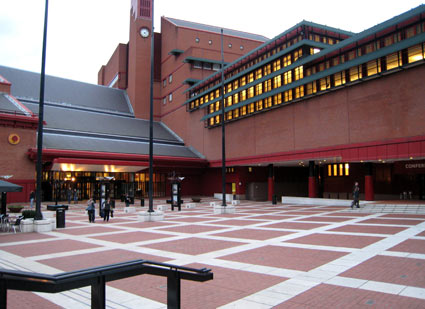

When you enter the British library you do not know what you should look at first: the items in the gift shop, the busts of individuals who contributed in helping creating the library or the architecture. I felt as if I had a short attention span. I wanted to study every detail that comprised the library. I did not want any detail of the library to escape my eyesight because every detail of this national research library would reveal an element of British culture. I wanted to look at what books comprised the library and what designs filled the front covers. I wanted to speak to the employees and learn about their background and the history of this library. I felt overwhelmed. I did not know where to begin. But luckily, we had a wonderful, knowledgeable, and cheery tour guide, named Mr. Luiggi, who shepherded the class around the library.
As he brought us around the library, he gave us brief facts about the library and it’s architecture. The British library was created as a result of the British Library Act on July 1st 1973. Prior to the national library, the library was a part of the British Museum. In 1998, the British Library was no longer a part of the British Museum. It had it’s own building on Euston Road in King’s Cross. At the King’s Cross location, the library houses some of the most historic documents, like the Magna Carta, the Lindisfarne Gospels, Leonardo Da Vinci’s Notebook, and the Beatle’s manuscripts. Mr. Luiggi was fascinated with the many historic books and manuscripts the library possesses. However, he was most passionate about the library’s architecture. According to Mr. Luiggi, Colin St. John Wilson was the library’s architect. Wilson designed the building like a cruise liner, since he always wanted to be a captain of ships but he never became one.
Mr. Luiggi went into further detail about the library’s architecture by informing us that the library has almost the same shade of brick as the Midland Grand hotel and St. Pancras so it blends in with the surrounding area. However, he informed us that there is a great distinction between the northern and the southern side of the building. The southern side of the building is where the main entrance is. The southern half of the building is surrounded by a low brick wall, which is topped with circular lanterns and a black metal gate. The northern side of the building on the other hand is protected with high sloping wire fences, which are topped with three rows of barbed wires because the pubic housing projects are located in this area. Lastly, Mr. Luiggi informed us that designing the British library was Wilson’s most memorable project. Wilson died on May 14, 2007.
No comments:
Post a Comment